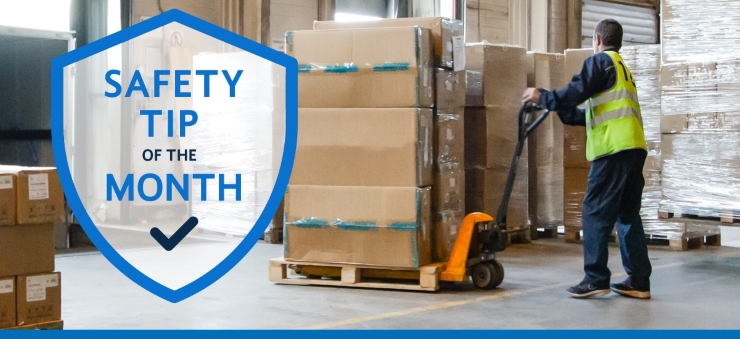Although businesses rarely think about pallets posing a risk, there have been several cases of employees suffering serious and even fatal injuries. The Occupational Safety and Health Administration (OSHA) reports a case where a worker died after being pinned between a pallet and a positioning table as well as another case where an employee was struck by a pallet in a walk-in freezer. Since pallets are crucial in grocery stores for storing, moving, and displaying products, removing this potential hazard is not an option. However, there are steps you can take to prevent pallet accidents in your store.
1. Check the Condition of the Pallets You Receive
When a new pallet arrives to your grocery store, inspect it for anything that could cause someone to be injured when handling it. Start by examining the overall condition of the pallet, looking for loose boards, splinters, cracks, and any other signs of weakness. Next, check the boards for protruding nails — these could cause an injury or damage merchandise.
2. Prepare the Pallet for Use
Some pallets may arrive to you with plastic wrap attached. Remove it before using the pallet — this could be a tripping hazard. If the pallet is damaged, decide whether it is possible to safely repair the pallet or if it would be better to dispose of it.
3. Adhere to Safety Practices When Handling Pallets
When moving pallets, wear proper protective equipment, such as cut-resistant gloves and closed-toe shoes. You should never walk or stand on pallets, as there is always a risk there’s a protruding nail that other workers didn’t notice. Plus, the boards could be weak and may collapse under your weight.
4. Use a Pallet Jack or Fork Jack
It’s better to use a pallet jack or fork jack to move pallets than to move them manually. If you don’t have either of these, consider investing in one — it will be less expensive than paying an injury claim for a worker. If purchasing one for your store is out of your budget, make sure employees are aware of the proper technique to move pallets. This involves placing the pallets on their edges and sliding them across the floor. It is never appropriate to throw a pallet.
5. Lift Heavy Wood Pallets with Someone Else
Wood pallets typically weigh 30 to 75 pounds. Since lifting more than 50 pounds increases your risk of an injury, you should always make sure there are two people available for the job when it’s necessary to lift a wood pallet that’s on the heavier side.
6. Load Pallets with Care
When placing products on a pallet, make sure the weight is evenly distributed. Workers should be aware of the maximum weight for each type of pallet you have and never to exceed this amount. Before moving the pallet, secure the load.
7. Protect Customers from Pallet Accidents
Once pallets are out on the floor, they have the potential to injure customers. For this reason, it’s important to inspect pallets one more time to ensure they haven’t suffered any damage during the move. There’s also a risk that customers could trip on the base of pallets. You can prevent this from happening by installing pallet guards. If any of your pallets lack pallet guards, check them on a daily basis to ensure they remain safe. You should also check pallets holding liquids to make sure there are no leaks that could cause a spill hazard.
Share Pallet Safety Tips with Your Workers
To prevent pallet accidents, it’s important that everyone at your grocery store takes safety seriously. Best practices can help your grocery store with pallet safety, reduce liability, and protect its reputation. For more information, download our Pallet Safety Tips guide.
Pallet accidents are just one risk your grocery store faces. Work with RiskPoint to identify other hazards and create a safe working environment for your employees. Contact us to learn more.


